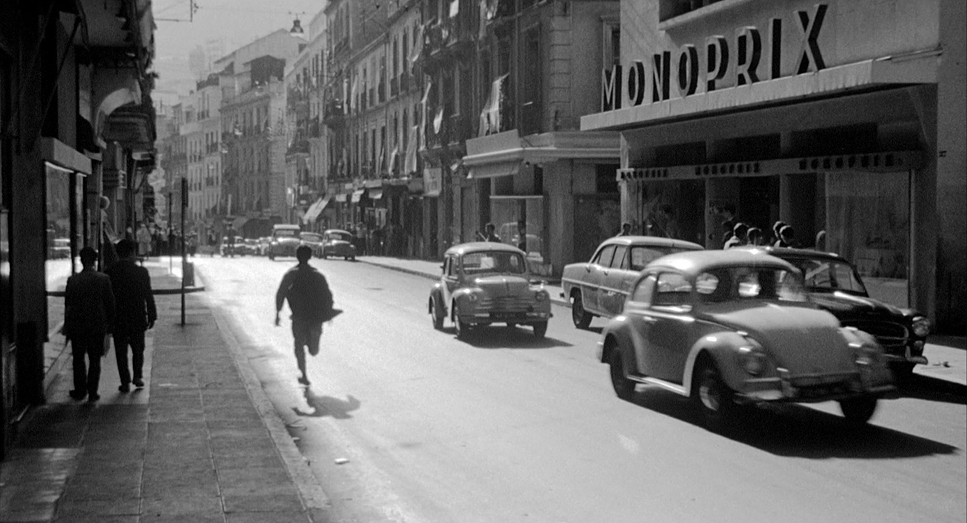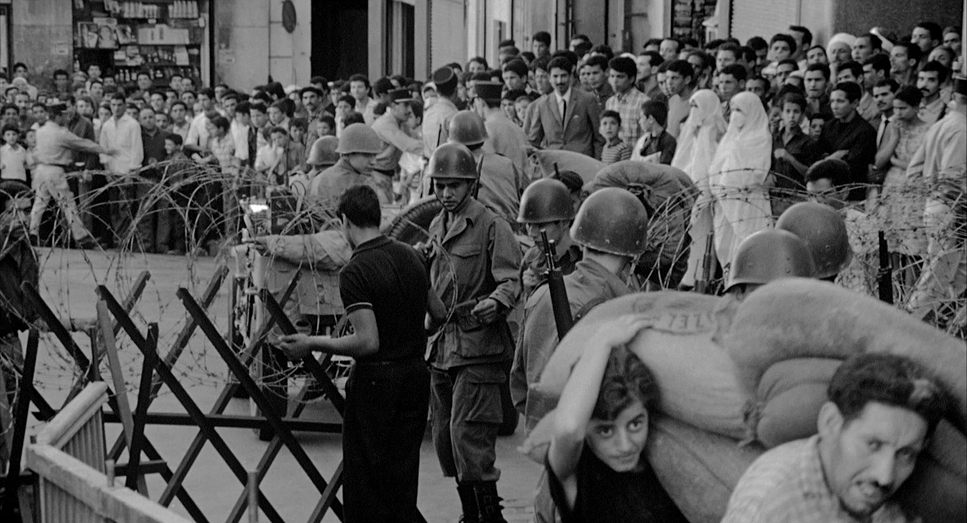One film that has profoundly influenced my perspective on cinematography is Gillo Pontecorvo’s The Battle of Algiers. In this article, I want to share my analysis of its groundbreaking cinematography, exploring how it masterfully captures the raw essence of the Algerian struggle for independence.
About the Cinematographer

Marcello Gatti, the visionary cinematographer behind The Battle of Algiers, delivered one of the most innovative visual narratives in film history. His ability to merge the rawness of documentary filmmaking with the meticulous framing of neorealism created a film that feels both authentic and profoundly moving.
Gatti’s expertise in black-and-white cinematography was instrumental in achieving the film’s pseudo-documentary aesthetic, effectively blurring the lines between reality and fiction. As someone who works intimately with color, I find his choice to strip the film of color particularly bold, allowing textures, contrasts, and compositions to take center stage. Gatti’s work exemplifies how cinematography can amplify a film’s emotional and political impact, setting a high bar for filmmakers and cinematographers alike.
Inspiration for the Cinematography of The Battle of Algiers

The film draws heavily from the Italian neorealism movement of the post-World War II era, taking inspiration from classics like Bicycle Thieves and Rome, Open City. Pontecorvo and Gatti adopted a pseudo-documentary style, employing handheld cameras and telephoto lenses to create a sense of immediacy and intimacy.
This approach gives viewers the impression of witnessing real events unfold, much like watching a newsreel. The thematic focus on resistance and liberation resonates with the global anti-imperialist sentiments of the 1960s. For me, this style doesn’t just tell a story; it immerses the audience in the emotional and physical realities of the Algerian struggle.
Camera Movements Used in The Battle of Algiers

Gatti’s use of handheld cameras brings an intense dynamism to the film. The fluidity of the camera movements immerses viewers in the chaos of guerrilla warfare, street protests, and military crackdowns.
For instance, during scenes of police raids and mob uprisings in the Casbah, the camera moves frantically, echoing the urgency and volatility of the events. This shaky, organic quality aligns with the film’s raw, unsanitized portrayal of conflict, making us feel like participants rather than mere observers. As a visual storyteller, I appreciate how these camera movements contribute to the film’s immersive experience, drawing the audience deeper into the narrative.
Compositions in The Battle of Algiers

The film’s compositions are meticulously crafted to convey the asymmetry of power between the French colonial forces and the Algerian resistance. Wide-angle shots depict the dominance of the French soldiers, often showcasing them in militarized formations that dwarf the individuals around them. In contrast, the Algerians are frequently framed within the tight, crowded confines of the Casbah, symbolizing their unity and resilience despite oppressive conditions. Close-ups during moments of heightened emotion capture the raw humanity of the conflict.
One particularly powerful sequence shows an Algerian woman nervously adjusting her veil before carrying out a bombing. The composition places her against the bustling background of a café, highlighting her isolation and the personal sacrifice inherent in the broader political struggle. Such thoughtful compositions enhance the emotional gravitas of the film, something I deeply admire.
Lighting Style of The Battle of Algiers

The lighting in the film is naturalistic yet meticulously crafted to heighten its realism. Gatti avoided the polished look of traditional studio films, opting instead for lighting techniques that mimic the harsh sunlight and shadowy interiors of Algiers. This approach creates a stark contrast between the brightly lit public spaces and the dimly lit, clandestine interiors of the resistance’s hideouts.
Daylight scenes often employ high-contrast lighting, enhancing the gritty, unfiltered aesthetic of the film. The interplay of light and shadow is particularly effective during interrogation scenes, where harsh lighting underscores the brutality and moral ambiguity of the French counterinsurgency tactics. As a colorist, I find this restrained use of lighting adds depth to the narrative, allowing the setting itself to dictate the mood and atmosphere.
Lensing and Blocking of The Battle of Algiers

Gatti’s lensing choices were critical in immersing viewers into the heart of the action. The use of telephoto lenses compressed the depth of field, creating a sense of urgency and chaos during crowd scenes. This technique makes the viewer feel trapped within the tumult of the revolution, enhancing the emotional impact. Blocking plays a pivotal role in the film’s visual storytelling.
The meticulous arrangement of actors within the frame reinforces the film’s themes. For instance, the juxtaposition of the French soldiers’ rigid formations against the organic, fluid movements of the Algerian masses reflects the clash between institutional control and grassroots rebellion. The scenes in the Casbah are a masterclass in blocking, with characters weaving through tight alleys, emphasizing how the physical geography of Algiers became a battlefield. As someone who appreciates the intricacies of visual composition, I find these choices profoundly effective.
Color of The Battle of Algiers

Although the film is in black and white, Gatti’s cinematography uses tonal contrast to evoke a vivid sense of place and emotion. The stark monochrome palette accentuates the harsh realities of war, stripping away any romanticism. The sharp contrasts between light and dark also serve to highlight the moral complexities of the conflict, where neither side emerges entirely unscathed.
The absence of color directs attention to the textures and details within the frame, such as the crumbling walls of the Casbah or the expressions on the faces of the resistance fighters. This focus enhances the documentary aesthetic, making the film feel timeless and universally resonant. From a colorist’s perspective, the use of black and white is a powerful tool that underscores the film’s themes.
Technical Aspects of The Battle of Algiers
From a technical standpoint, The Battle of Algiers is a marvel of 1960s filmmaking. The use of non-professional actors and real locations lent authenticity to the film, while Gatti’s choice of 16mm film stock contributed to its grainy, newsreel-like quality. The editing, marked by rapid cuts and seamless transitions, maintains a relentless pace that mirrors the escalating tension of the narrative.
The sound design further amplifies the immersive experience. Ennio Morricone’s score, with its juxtaposition of military drums and haunting flutes, underscores the emotional and cultural divide between the French and Algerian factions. The integration of ambient sounds, such as the cries of grieving families or the chaotic noise of protests, reinforces the film’s realism. As someone who works behind the scenes to shape the final look of films, I deeply appreciate the cohesive effort in technical execution that makes this film so impactful.